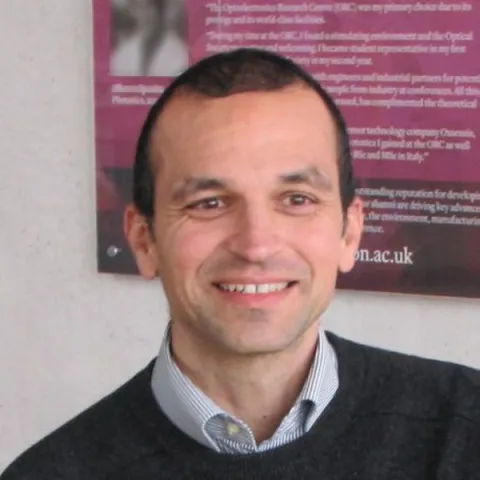About the project
The space communication environment is like no other, subjecting data-carrying lasers to immense transmission distances, substantial Doppler shifts and, in some cases, a highly turbulent atmosphere. To help overcome these challenges, in this project you will develop advanced optical amplifiers for the exciting era of satellite lasercom on the horizon.
Fibre-optic communication is a well-known and well-established technology that has come to dominate high-capacity terrestrial communications. Without it, the internet would simply not exist as it does today. It is therefore surprising that optical technologies have not seen the same uptake for satellite communication as they have done for wired communication, with microwave transmission instead continuing to be the mainstay form of satellite communication. At least part of the explanation lies in the highly challenging environment that space presents: optical signals must bridge exceptionally large distances between satellites and ground stations with highly dynamic relative velocities and, if the link contains a leg through the atmosphere, these optical signals must also overcome turbulence induced scintillation. All this means that signals may be subject to levels of attenuation simply not found in fibre-optic networks. The solution? Build higher power transmitters and higher sensitivity receivers. The key technology? Optical amplification.
In this project, you'll investigate advanced amplifier designs tailored specifically for the challenging environment of satellite optical communications or lasercom, as it is known. You'll have access to our cutting-edge optical communication facility, X-band Labs, and, in combination with our developing free-space optical communications testbed, you'll perform high-impact demonstrations of the novel amplification solutions that you'll develop for the growing lasercom industry. This project provides an exciting opportunity to be part of this historic transition towards optical satellite communications.
Throughout this project you'll gain experience handling and splicing optical fibre, building fibre-optic and free-space optical communication systems using lasers, modulators, photodetectors, high-speed (>70GHz) arbitrary waveform generators and oscilloscopes and, of course, developing novel optical amplifiers.
The School of Optoelectronics (ORC) is committed to promoting equality, diversity inclusivity as demonstrated by our Athena SWAN award. We welcome all applicants regardless of their gender, ethnicity, disability, sexual orientation or age, and will give full consideration to applicants seeking flexible working patterns and those who have taken a career break. The University has a generous maternity policy, onsite childcare facilities, and offers a range of benefits to help ensure employees’ well-being and work-life balance. The University of Southampton is committed to sustainability and has been awarded the Platinum EcoAward.
